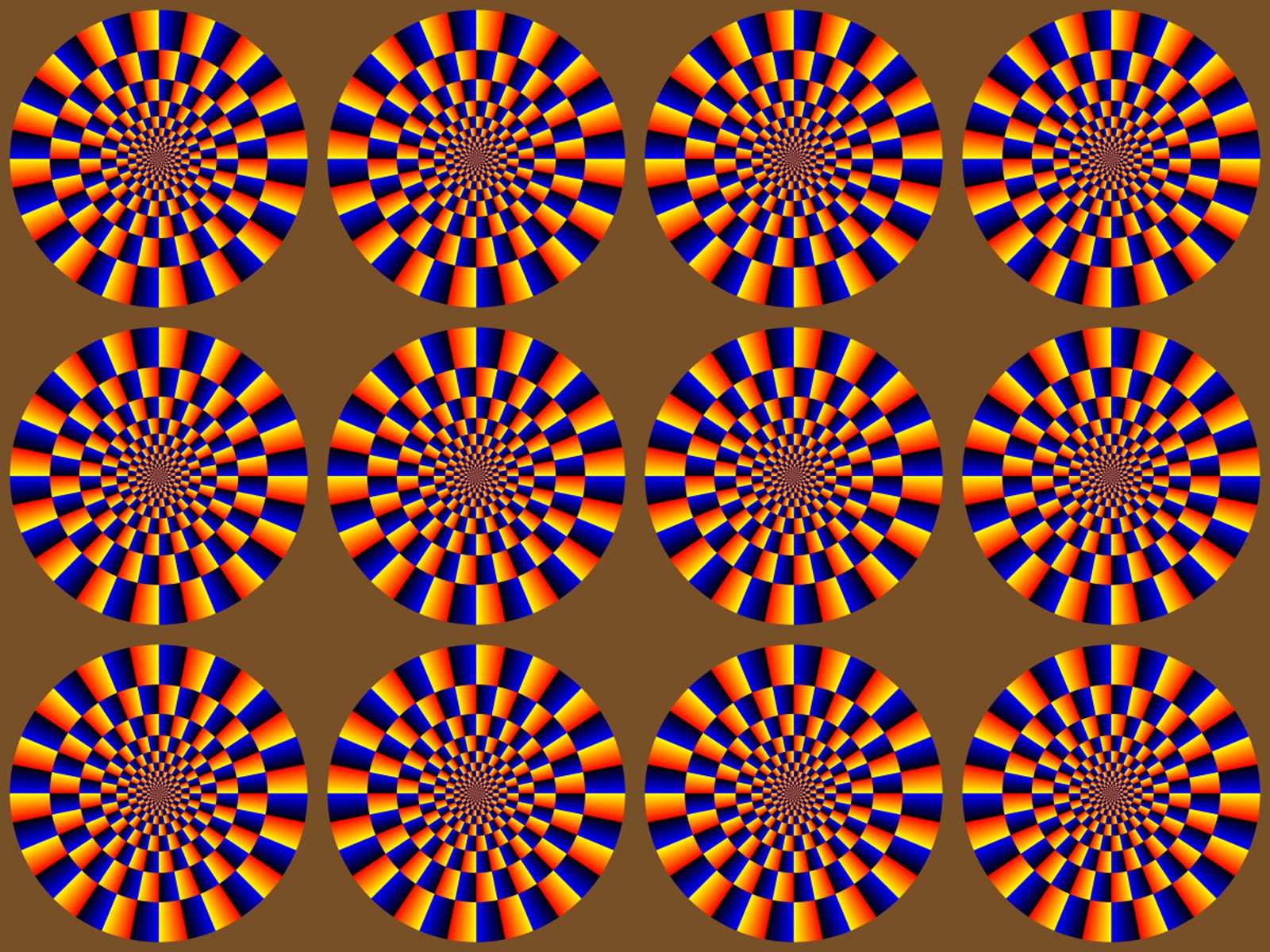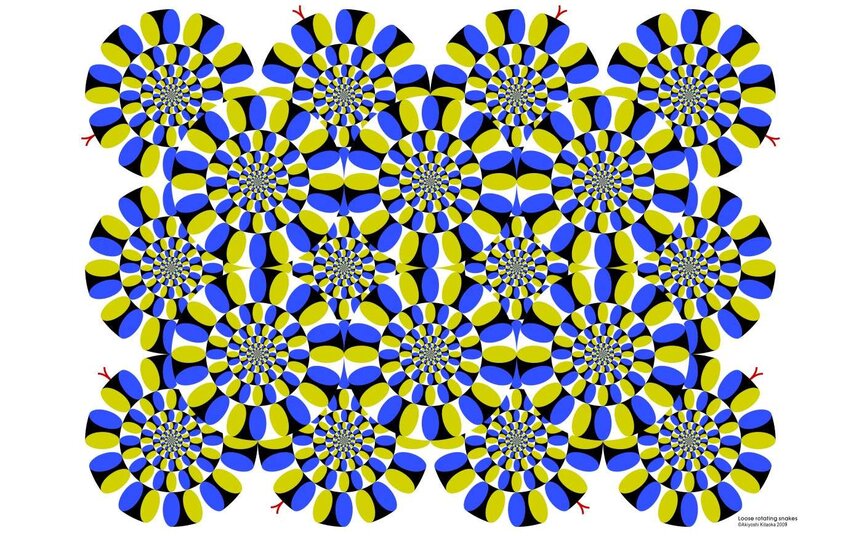Create a free profile to get unlimited access to exclusive videos, sweepstakes, and more!
I swear these illusions aren't moving. Your brain will say otherwise.

Y'all know how much I love illusions and what they tell us about the way our brains are wired. I have one for you that's really good, but I feel I should warn you: It might make you a little nauseated; it gives an illusory sense of motion to fixed patterns. I did quite a bit of reading for this and looked at a lot of versions of it, and afterwards felt decently queasy. Mind you I'm sensitive to motion sickness (reading in a car makes me feel seriously ooky), but on the other hand I was having sinus issues due to wildfire smoke, so who knows.
The illusion has the technical general name of peripheral drift, but specifically this one is called "rotating snakes". I think you'll see why.
This illusion is by professor of psychology Akiyoshi Kitaoka, about whom I've written many times, and who has graciously allowed me to use his images.
The image consists of 18 separate circles, each divided into sections that make them look a bit like snakes (he added little forked tongues to make the simile more obvious). Each snake is made up of concentric rings, and each ring is made up of little segments that consist of a blue and yellow ellipse separated by a black concave shape, and each segment is separated by a white concave shape (or vice-versa).
And if you're anything like me you see those snakes rotating! Mind you, they're not. That's a JPG image, so no animation. Save it to your device and take a look if you don't believe me — I always urge people to check my claims with illusions to see if they're real, and try to make sure what I'm saying is honest.
But they are, and I am.
The motion is super obvious to me, and in fact it's very difficult to not see it. One way to minimize it is to stare right at the center of one of them, and don't move your eyes. The motion slows and stops. But as soon as your eye flicks to another spot (this involuntary motion is called a saccade), the snakes spin.
Note that adjacent snakes spin in opposite directions! Can you see what might be behind that? For example, in the upper left snake, the color pattern is yellow-black-blue in the clockwise direction, but the one next to it is blue-black-yellow. I see the first one rotating clockwise, and the second counterclockwise. That's true for all of them that have the same pattern.
Dr. Kitaoka has made many, many versions of this illusion. The one I used here, which works the best for me, is from this page on his site. Scroll to the bottom for links to dozens more.
This illusion is popular, and I've seen it online in many places. What I haven't seen in those articles/social media postings is an explanation. And there's a good reason for that...
What causes this illusion? Clearly there is no motion in the image itself, so it's something to do with our eyes and/or brain. Dr. Kitaoka has a short explanation on his site, saying that this illusion works on our peripheral vision (hence the illusion technical name), when you don't look directly at something but instead keep it away from your center of vision. And while he does give a brief explanation on how to make the illusion, he specifically notes that the mechanics of it (why it works) isn't fully understood.
In fact, several papers have been published trying to explain this illusion, but it's still not clear. You need to have a series of shapes that change in luminance (brightness, that is, or have a change in contrast from shape to shape) and it helps to have them arranged in a circle.
One idea is that our brains process high contrast regions (like where the yellow meets the black) faster than low contrast ones (like where blue meets black). If you have a series of shapes of different contrasts, they are physically processed at different times in the brain. This is a separate mechanism in your brain than the part that processes motion, however, and that part gets the data from high and low contrast areas at different times, so it's fooled into thinking there's motion.
That would explain why fixing your gaze reduces the illusory motion; your eyes see both the high and low contrast parts steadily, so there's no lag between the two. Move your eye and it gets new info on where the different parts are, so you get that lag again and your brain perceives it as motion.
Some papers I read said that blinking rapidly can increase the illusion, but I don't really get that when I try it. It only works as I move the gaze of my eye. The segments need to be sharply defined as well; if the image is blurred a bit the illusion diminishes or goes away entirely; see Figure 8 at this link, for example. The paper at that link also says that the illusion does not depend on eye movement, but this paper claims it does.
Unfortunately this means I can't really provide you with a definitive (or even generalized) explanation of why this works. But on the other had this means there's still stuff to figure out about how our eyes and brain talk to each other, which is cool. On the third hand this is not exactly a surprise to anyone who has read any of my articles on illusions, because wow do our eyes and brain not get along well sometimes. Heck, our brains don't do well even on their own most of the time.
Just something to consider the next time someone says "I know what I saw."
Do you? Do you really?





























